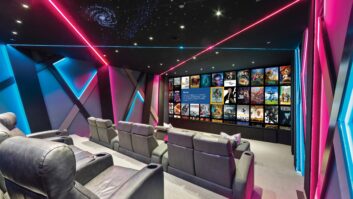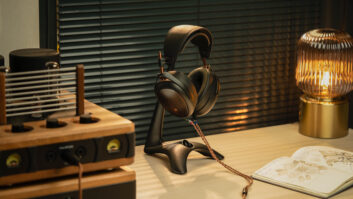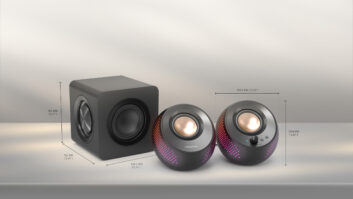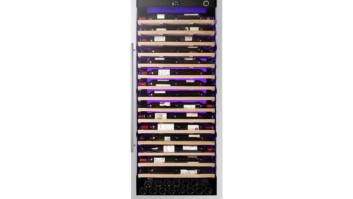We thought we didn’t have to worry about competing home-entertainment formats anymore like we did during the Beta/VHS, CD/DAT and DCC/MiniDisc competitions.
Thanks to digital technology, suppliers developed “universal” DVD players that played DVD, SuperAudio CD, and DVD-Audio discs, not to mention CDs. Blu-ray players play back Dolby TrueHD and dts-HD Master soundtracks.
And now the first Dolby Atmos/Auro-3D audio/video processors are coming our way, and some audio/video processors (AVPs) will decode both formats. But the home-theater speaker arrays that they require for optimum performance are quite different.
“With Auro, the height channels are critical,” said Dan Schultz, VP of Datasat Digital Entertainment, formerly the cinema-equipment arm of DTS. “So you can’t use an Atmos [speaker] array to play Auro [soundtracks].”
Dolby doesn’t believe Atmos would play well through an Auro-3D array either. “Dolby Atmos content is optimized for the expectation of overhead speakers or Dolby Atmos- enabled speaker systems for playback,” a spokesman told me. “A speaker layout that does not conform to this will be a compromise and will not match the intention of the content creator.”
By now, most trade folks know that for best effect, Atmos requires the installation of at least two speakers in the ceiling to accompany a traditional 5.1- or 7.1-speaker setup. In lieu of in-ceiling speakers, consumers can opt for Atmos-enabled in-room speakers with top-firing drivers angled up to bounce height effects off the ceiling.
Auro-3D takes a different approach. A traditional 5.1- or 7.1- channel speaker array is supplemented by a second layer of wall-mounted height speakers above the ear-level array. Then there’s a single ceiling channel that can be delivered by one or more speakers.
For smaller rooms, an effective Auro-3D configuration delivers 9.1 channels: a standard 5.1 system complemented by height channels corresponding to the left, center, left surround and right surround channels, said Schultz.
So what’s a consumer to do?
Katherine Spiller, director of sales and marketing for Steinway Lyngdorf, has a solution, but it’s not for most of us.
Her company plans first-quarter shipments of the $18,000-suggested P200 A/V processor, which will decode Atmos and Auro content. The processor is sold as a package only with Steinway Lyngdorf amps, speaker, and woofers.
Although there are differences in the recommended speaker layout for the two formats, she said, “often some of the surround speakers will overlap.” With the P200, she explained, “you can install several different [speaker] configurations and switch between them seamlessly.”
The processor, she said, “will automatically detect the format and turn on/off the amplifiers for the speakers required.”
“For many of the quotes we are doing now,” she said, “we are able to reuse most of the surrounds and just add one to two additional height/voice of God speakers for the Auro format.”
Schultz also sees the potential for separate but overlapping speaker systems, but he added, “I do think from a practical viewpoint, not many consumers will spend the money on a superset of speakers that can play back both formats.”
Here’s how it could be done, though. “Auro-3D uses a layer of height speakers [on the front and side walls] that are not used by Dolby Atmos,” he explained. “Atmos does require at least a stereo pair of overhead speakers, and in a bigger room recommends two pairs, or Dolby Elevation speakers to simulate overheads. Auro-3D has only a mono overhead speaker, but you could certainly use two or four speakers overhead for Atmos and then use those same two or four speakers to play back the mono overhead channel for Auro-3D. Both formats use the same 5.1 or 7.1 bed on the floor. So as long as you have two or four overhead speakers, you could play back Atmos properly, but in order to play back Auro-3D you also need the height layer, which is not used by Atmos.”
For folks who would consider installing a dual Atmos/Auro-3D sound system, Datasat plans to support both technologies on a single A/V processors. The company offers the $19,000 RS20i and $11,000 LS10 AVPs, both with an optional $3,000 Auro-3D decoder. Dolby Atmos will be made available in early 2015 for the RS20i via a firmware update or via the addition of a hardware board in an expansion slot. Future Datasat products will also incorporate both surround technologies, Schulz said.













